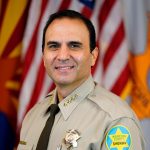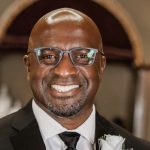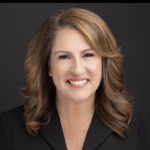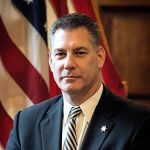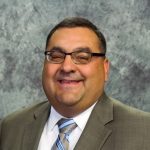As the 2022 midterms approach, the Committee for Safe and Secure Elections is convening election officials and law enforcement personnel from across the country to address an urgent concern: protecting the public servants who administer elections and voters from intimidation, threats and violence. The group is chaired by Neal Kelley, who was for nearly 20 years the chief election official in Orange County, California, the nation’s sixth most populous county. He’s also a former police officer. In this Q&A, he explains the Committee for Safe and Secure Elections and its work.
Why did the Committee for Safe and Secure Elections form? And why is this effort so important right now?
To our knowledge, it’s something that hasn’t existed before. We’re a nationwide group of current and former police, sheriffs, and election officials, coming together to address threats and violence against voters and election workers. We’ve also got some other experts in the election administration field who are members. The Committee is working to build relationships, provide training and resources, and identify policy changes that will help both election workers and law enforcement officials prevent and respond to this problem.
And why now? I know from firsthand experience, and from stories from former colleagues in the field, that over the last few election cycles the violence and harassment directed at election officials has gotten worse. In fact, a recent poll of local election officials found that around three in four local election officials feel threats against them have increased in recent years. We’ve got to do more to protect them so they can continue to run free and fair elections across the country.
Why hasn’t this lack of resources or training been formally addressed before?
After 2016, foreign interference in our elections led many election offices to build relationships with federal partners – like the FBI and the Department of Homeland Security – to improve cooperation on cybersecurity issues. But physical security for election officials, staff, voting places, etc., by and large wasn’t addressed. So when we got to 2020, when these physical security issues really became amplified, you found local law enforcement officers and election officials just not communicating. It hadn’t been part of the planning for election officials in previous years, because it hadn’t become a major problem. But 2020 made us think about what a local official should do if he or she receives threats. Who do they contact about a threat? How can the election officials, and the process of voting more broadly, be protected from disruption? The Committee was created to help law enforcement and election officials better communicate on these issues and address these ongoing threats.
What can the Committee do about this?
We see addressing this issue as a multi-pronged process that includes building up resources, relationships, and policy. When I was registrar in Orange County, for example, I spearheaded the creation of a guide for local law enforcement. In my nearly 20 years in that job, I can’t tell you how many times I was at a polling place and encountered a law enforcement officer confronting an unusual situation and they’d ask, “Is this even a crime?” So we created a pocket guide.
If you’ve ever been pulled over, say, by a state trooper, he or she probably has a small reference guide to commonly used vehicle codes – basically, codes denoting commonly cited traffic infractions. What’s the code for an illegal turn? What’s the code for speeding in a school zone? And so on. Even though they may use these codes every day, the guide reminds them what those code sections are and what the elements of the crime or the infraction might be. The Committee thought the guide I created could be a model for developing similar materials for local officers around the country, specifically about elections.
How would that work?
A regular police officer on the street is handling traffic violations, drug overdoses, robberies and so on every day. They’re not handling threats against election officials or voters, or local election-related regulations or laws that explain what activity is permitted near a polling place, as an example. What are election crimes? What constitutes a meaningful threat? Elections don’t happen every day, so during the election cycle – basically, starting 90 days before an election – they can check the guide and say, “Okay, here are the elements of the crime. Here’s the code section in my state that’s relevant. Here’s what I need to do.” The guide will also include other critical information: How do I contact federal partners? How do I connect with intelligence divisions in local law enforcement? What’s the hotline for the election office?
What’s the next part of the process?
The second part is training. One of the challenges the Committee has is establishing that threats to election officials are a real issue. Some people in law enforcement think that this is overblown, that the issue is exaggerated. Of course, that mirrors society itself – it’s no different from what you’re seeing in other areas. But it is a problem. Reuters has been looking at this and found more than 850 hostile messages or threats related to the 2020 election that were aimed at election officials and their staff.
To combat that, we’re developing resources and training materials that explain the problem, detailing the different ways election officials can be threatened and what steps can be taken to prevent that. The Committee is thinking hard about how to most succinctly present this information in a way that makes it easy for law enforcement officials and election officials to digest and implement.
Can you talk more about what it might take to implement some solutions to help solve this problem?
That’s another part of our process: building relationships. We want law enforcement to get in touch with their local election officials well before Election Day. And election officials need to make contact with law enforcement. Together, they need to establish joint procedures for communication in advance of the election. An election official shouldn’t arrive at work on Election Day without knowing what to do if they encounter a threatening situation. If the local police and the local election officials have met in advance and discussed potential issues, knowing how to respond will be much clearer. We hope to provide some sort of guidelines that can help election officials through this, and help them protect themselves and voters. How do I start the process? How do I build this relationship?
It’s important to say that when it comes to building these relationships, I’m not talking about having or increasing the number of armed police officers at polling locations. The presence of police officers at the polls can be viewed as intimidation, and it’s important for both election officials and law enforcement officers to be aware of and sensitive to that. We are talking about improving communication so that these specific threats and attempts at disruption can be addressed, and the voting and vote-counting process can continue smoothly.
Why would this sort of thing not already be in place?
It’s never been part of the training curriculum for election officials. And like I mentioned, threats against election officials are an issue that really came to the forefront in the lead-up to the 2020 election. Some local law enforcement officials may not know this is a problem, or may not realize the scope of the problem or that it’s ongoing.
That’s why it’s so important to get everyone on both sides of this equation to know how to communicate with each other, and to get election officials engaged with law enforcement at the local level – street officers, beat officers, detectives. If law enforcement officials are having conversations with people who have been through these threats, or who fear they might be facing this sort of experience, you’ve got a better chance of understanding the issue and what needs to be done. I know from my own experience that when you’ve been in the middle of a disrupted election, there’s nothing like telling your own story to get people to see what the problem is.
How do you reach all of the people who need this information?
There are more than 3,000 counties in the U.S., so we know that there are a lot of folks in these roles who may find these resources helpful. In Orange County the guide we put together was very well received by police departments in all 34 cities in the county. And then it started to be replicated in Wisconsin and then in Michigan, kind of through the grapevine. The Committee for Safe and Secure Elections is going to make the spread of this material much more efficient. We’re creating a template that any jurisdiction anywhere in the country can use – they fill in the local information, and it’s ready to print. We want to make it super easy for them.
What about interaction with legislators or council members or other officials involved in lawmaking?
That brings us to another step, which falls in the policy arena. Changes in regulations, laws, and policy might reduce the risk of particular threats, or give law enforcement and election officials dealing with these threats some guidance on how to report or track them, or to recognize warning signs of potential threats. Getting the word out about this is extremely important, and we ultimately hope to have this effort lead to more public awareness. But the first thing on our plate is reaching out to the people who run elections, and the people who protect election officials and voters, and helping them work together. Our committee is just getting started, and we’ve got a lot of work ahead.

